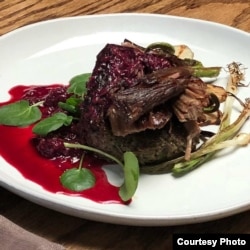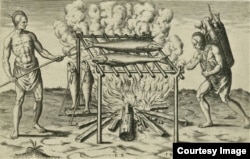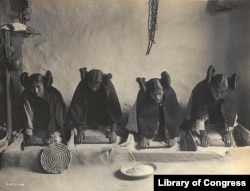A Native American chef has been awarded one of the food industry's highest honors for his efforts in revitalizing traditional indigenous food systems in North America.
On Tuesday, the James Beard Foundation (JBF) announced that Sean Sherman, a member of the Oglala Lakota Sioux tribe from the Pine Ridge Indian Reservation in South Dakota and founder/CEO of The Sioux Chef is to receive a Leadership Award for his work in helping Native Americans reclaim historic food and agricultural systems.
Beard awards, which Time magazine has dubbed "the Oscars" of the American food industry, are given out annually in a number of categories; the 2019 Leadership Award celebrates food system " visionaries" and acknowledges Sherman's extensive research into diverse Native American farming techniques, wild food usage and harvesting, land stewardship, food preservation, as well as tribal cultures and histories.
"We're trying to raise awareness of the history of the land and on how to live sustainability on what's around us," said Sherman, speaking to VOA by phone during a two-hour drive to Iowa to buy heritage seeds. These seeds of rare, heirloom and open-pollinated plant varieties could disappear if not cultivated and banked.
"Even non-indigenous chefs should be really excited to learn about plant diversity to utilize in their cuisines," he said.
Lessons of the ancestors
Prior to the arrival of European settlers, tribes hunted, fished, gathered and farmed a wide array of animals and plants, depending on their locations. By the late 1800s, forced onto reservations that were often far from their traditional homelands, tribes were restricted in their rights to hunt, fish or forage for wild food and forced to make do with U.S. Army rations of flour, lard and salt—ingredients alien to the indigenous diet. The rations were later replaced by the commodity food program.
"That has never been a nutritional program, and it has contributed to the health epidemics that we see in tribes across the country--mass obesity, mass rates of heart disease,Type Two diabetes—you name it," said Sherman. "A change has to take place, and this is the best way to start to utilize the lessons of our ancestors that would have been passed down to us, if it hadn't been for cultural assimilation efforts.
In 2014, Sherman launched "Sioux Chef"--a play on the French term sous-chef, the number two person in any restaurant kitchen. The Minneapolis-based business was more than just a catering company; it was a collaboration of chefs, food preservationists, botanists and enthusiasts from several U.S. tribes all bent on restoring pre-contact diets.
Sherman and Minneapolis chef/food critic Beth Dooley in 2017 published "The Sioux Chef's Indigenous Kitchen," a cookbook featuring modern takes on traditional ingredients: stuffed squash blossoms, for example, wild-rice cakes or venison with apples and cranberries, all made from ingredients easily found in nature. This earned him the 2018 James Beard Foundation Book Award in the Best American Cookbook category.
This year, Sherman and his team will open a Native American restaurant in Minneapolis, along with a non-profit indigenous food laboratory for shared use. "People can take classes on wild foods and education, agriculture or food preservation, and the restaurant is designed to allow people to develop their skills working alongside us in the restaurant," he said."Our ultimate goal is to open up indigenous food labs in cities everywhere."
He's also a big proponent of so-called permaculture design -- working with nature to meet food needs.
"We want to get tribes to use their open spaces and landscape with the foods that are particular to their regions," he said. That might be cultivated crops like squash, beans or corn, staples of pre-contact agriculture across the country; amaranth, a highly nutritious grain on which South American tribes once thrived; or wild rice from the Great Lakes Region.
While his work focuses on North American foods and peoples, Sherman said it has important applications for all indigenous peoples.
"We want to become a resource for anyone interested in decolonizing foodways across the globe," he said. "It doesn't matter if you're in Africa or India or Southeast Asia; it's the same story everywhere. We just want to set the tone."











